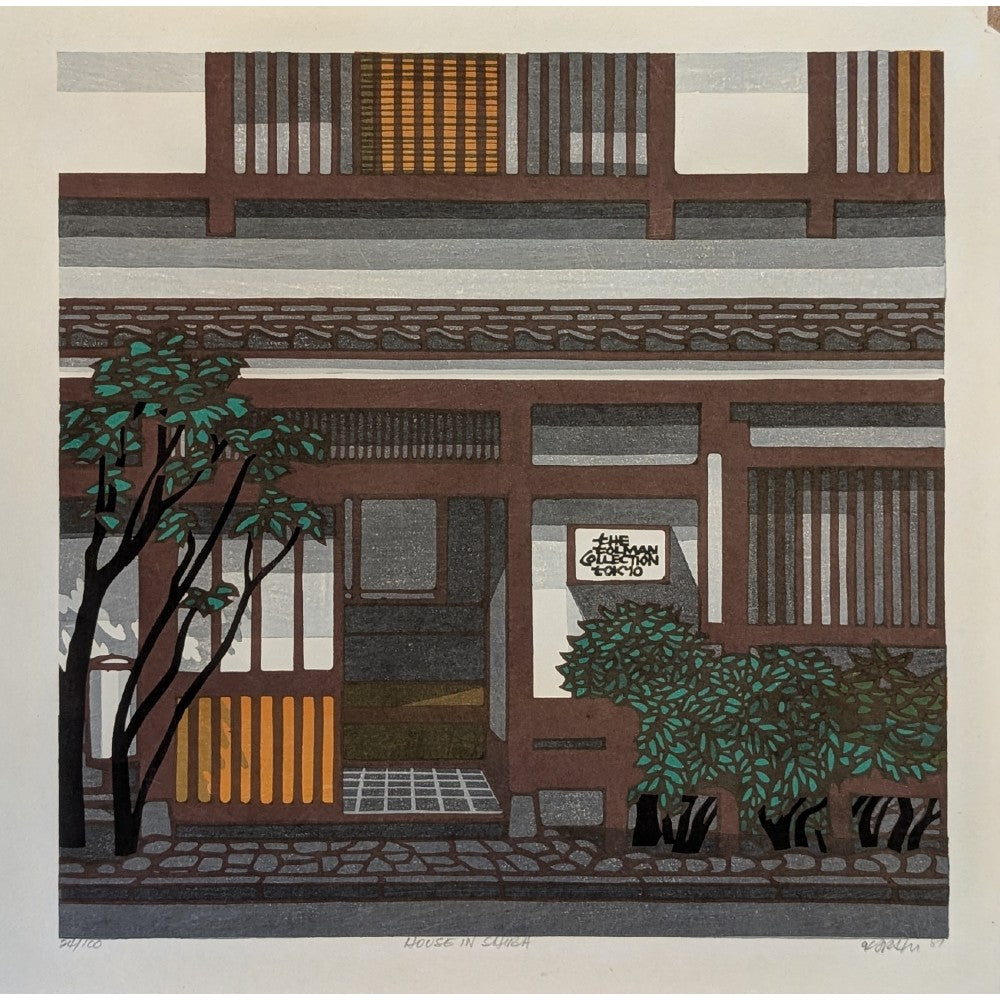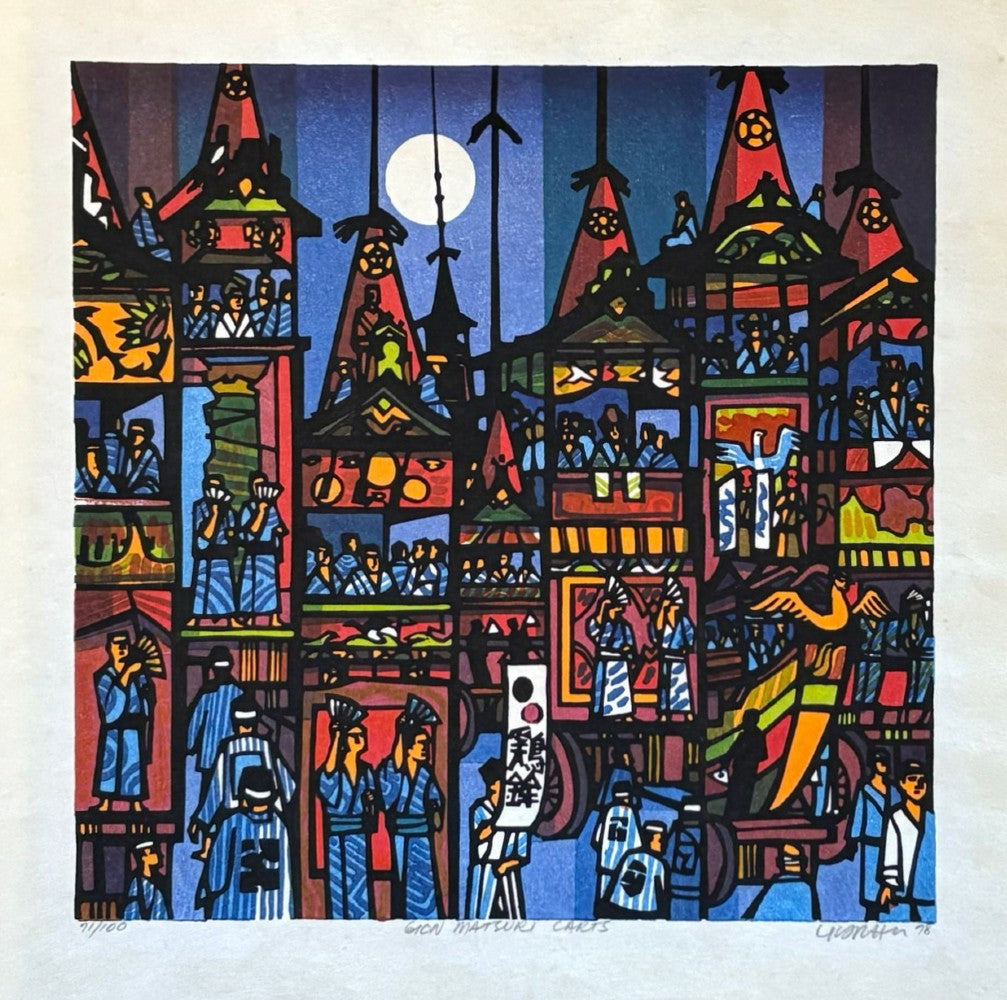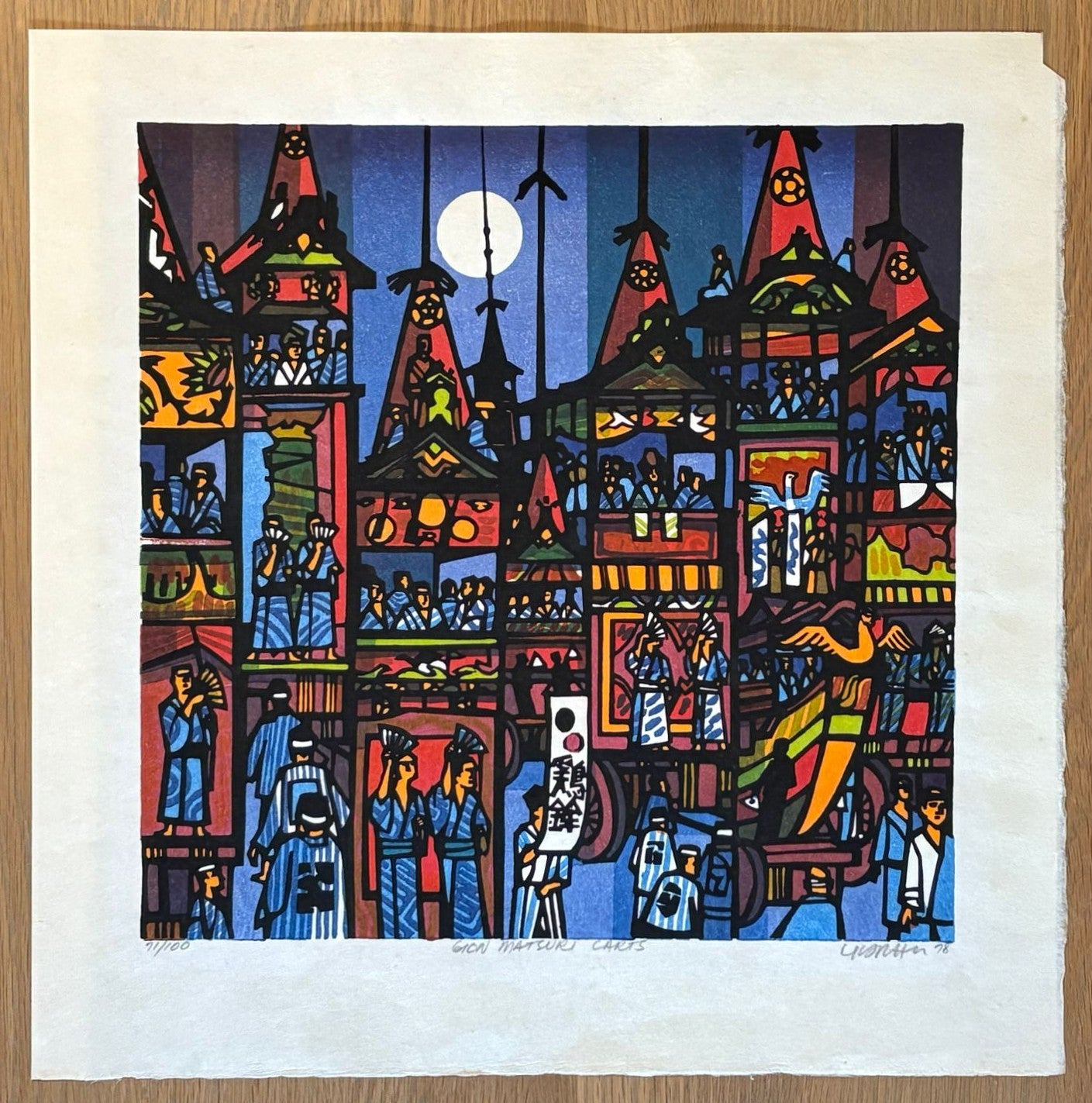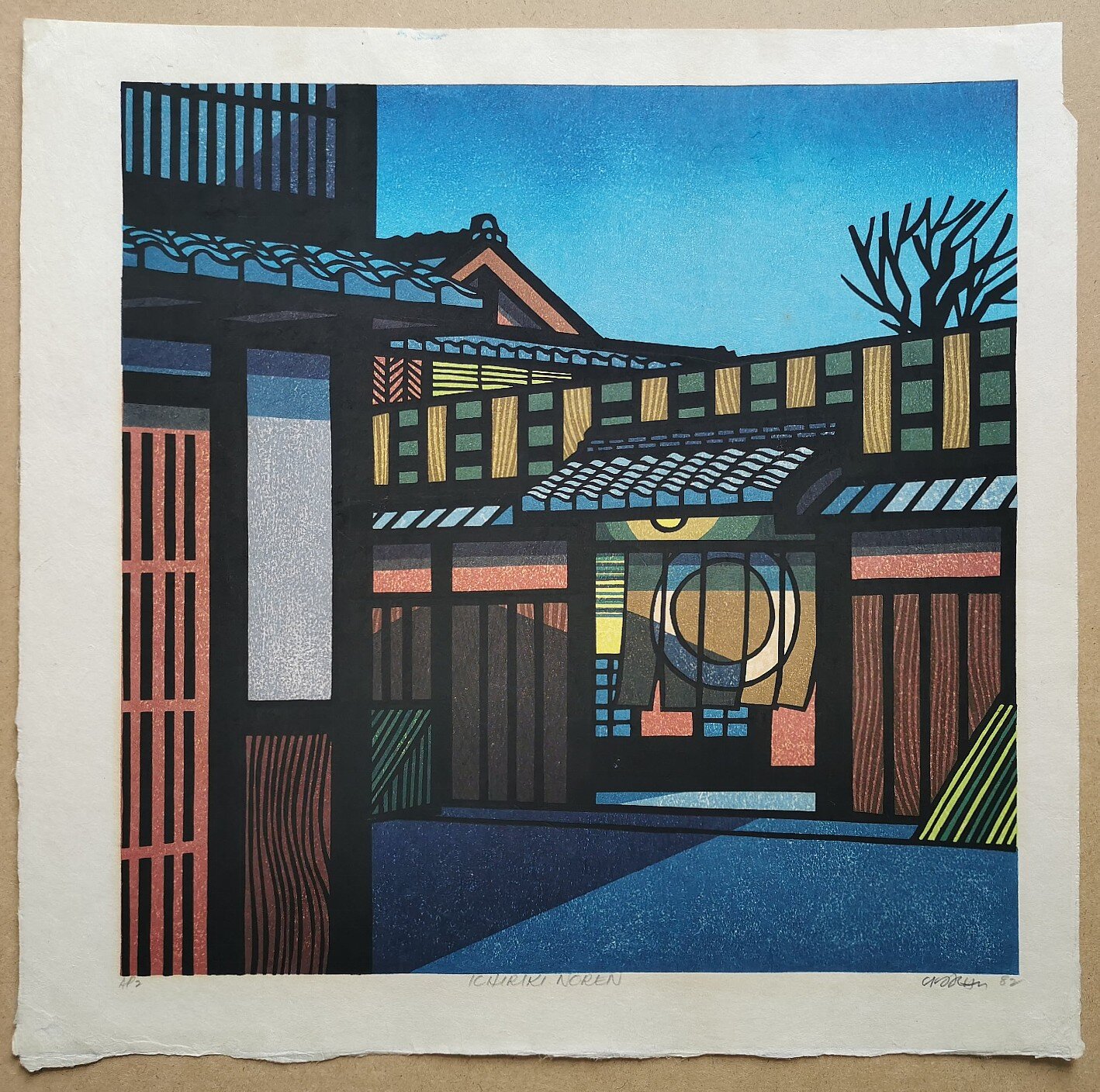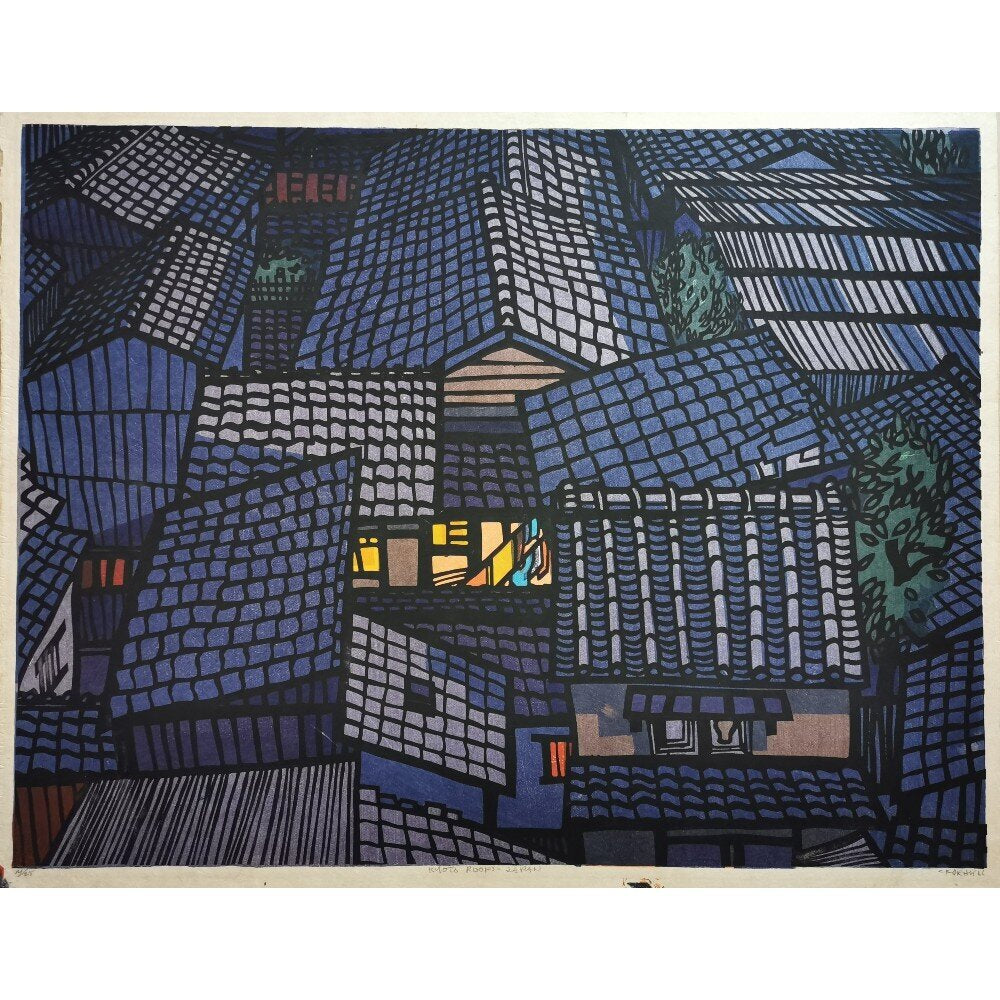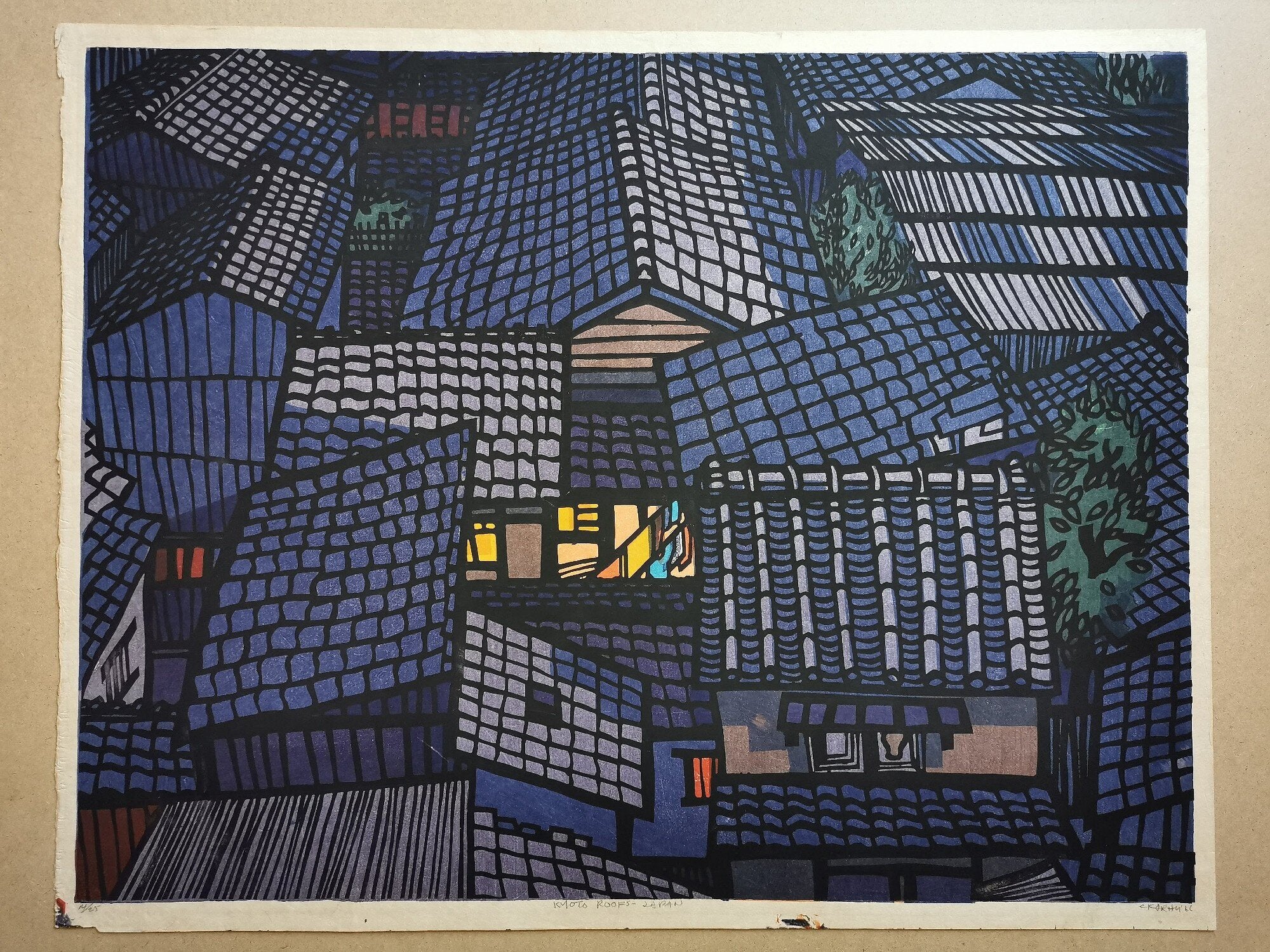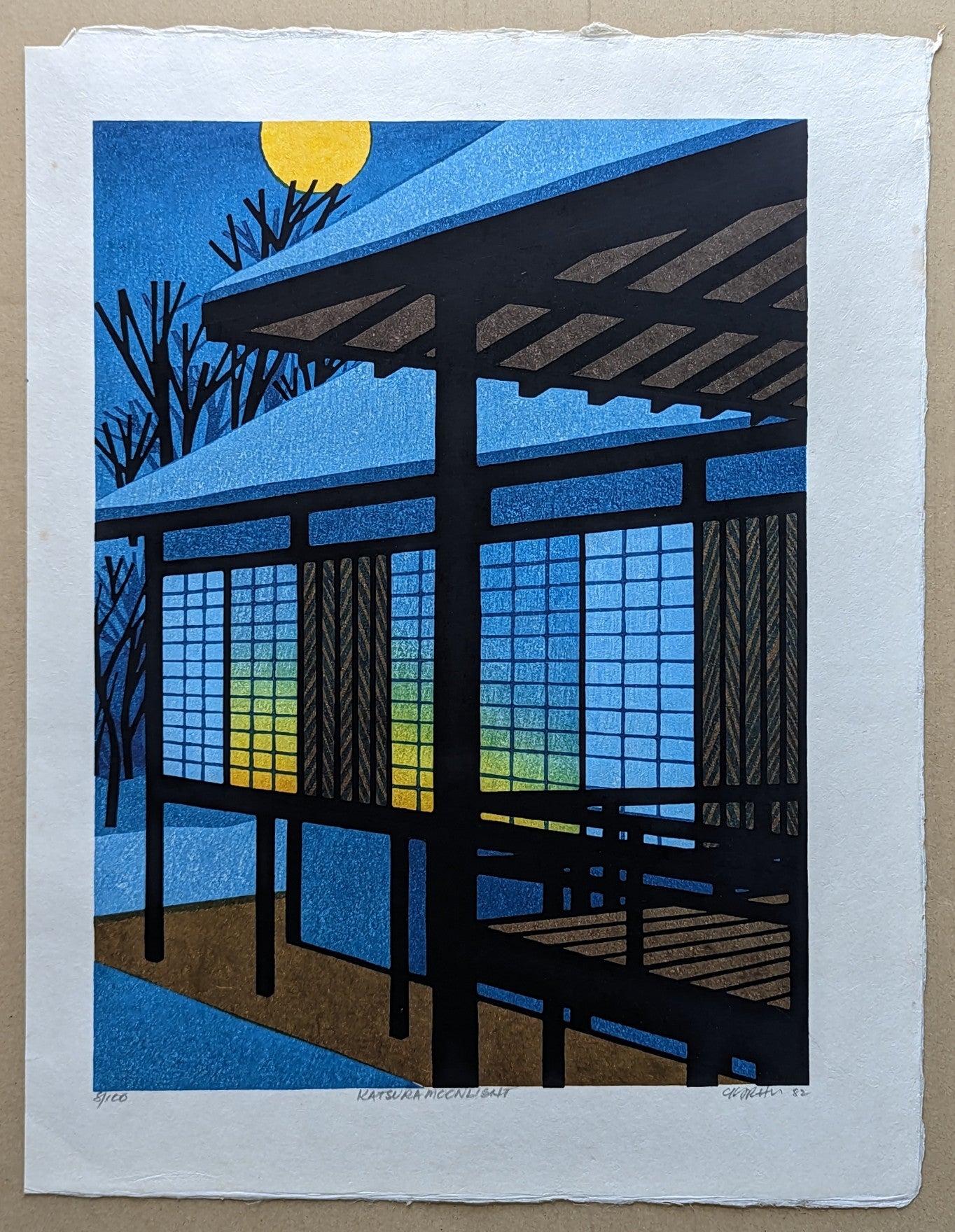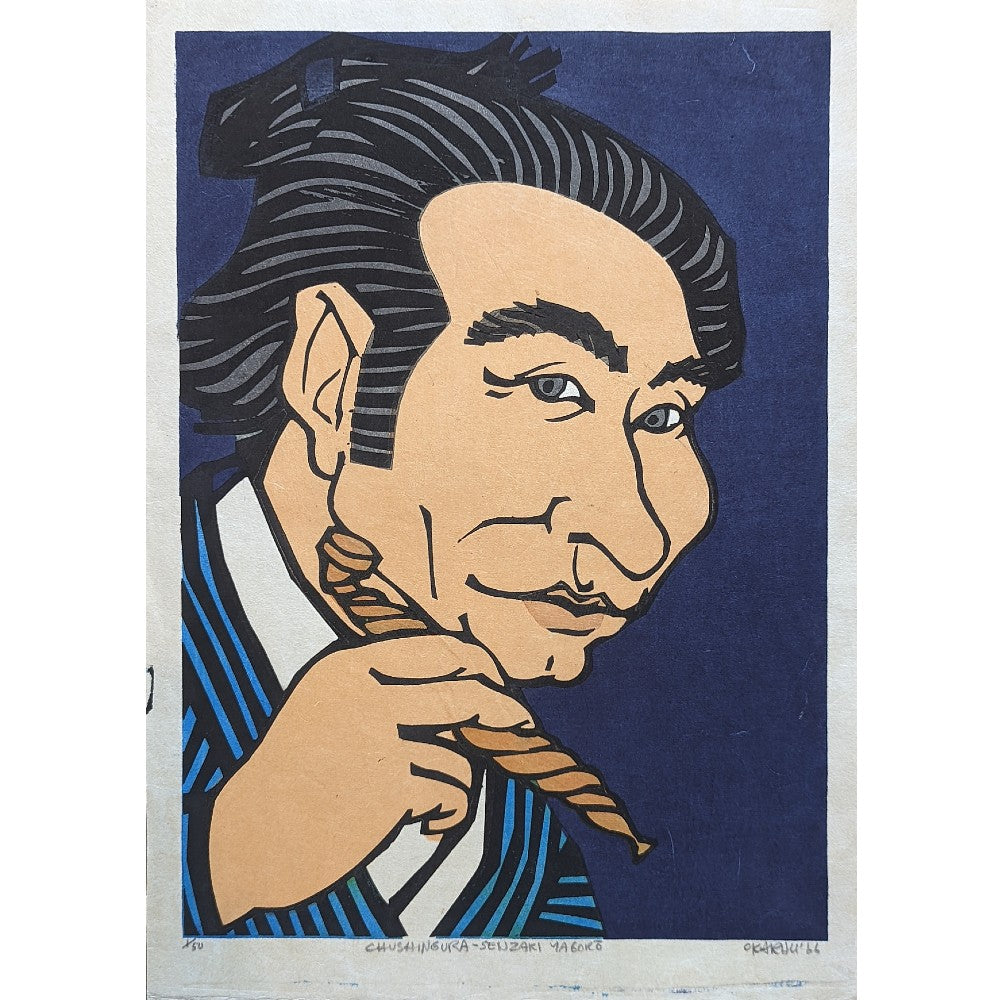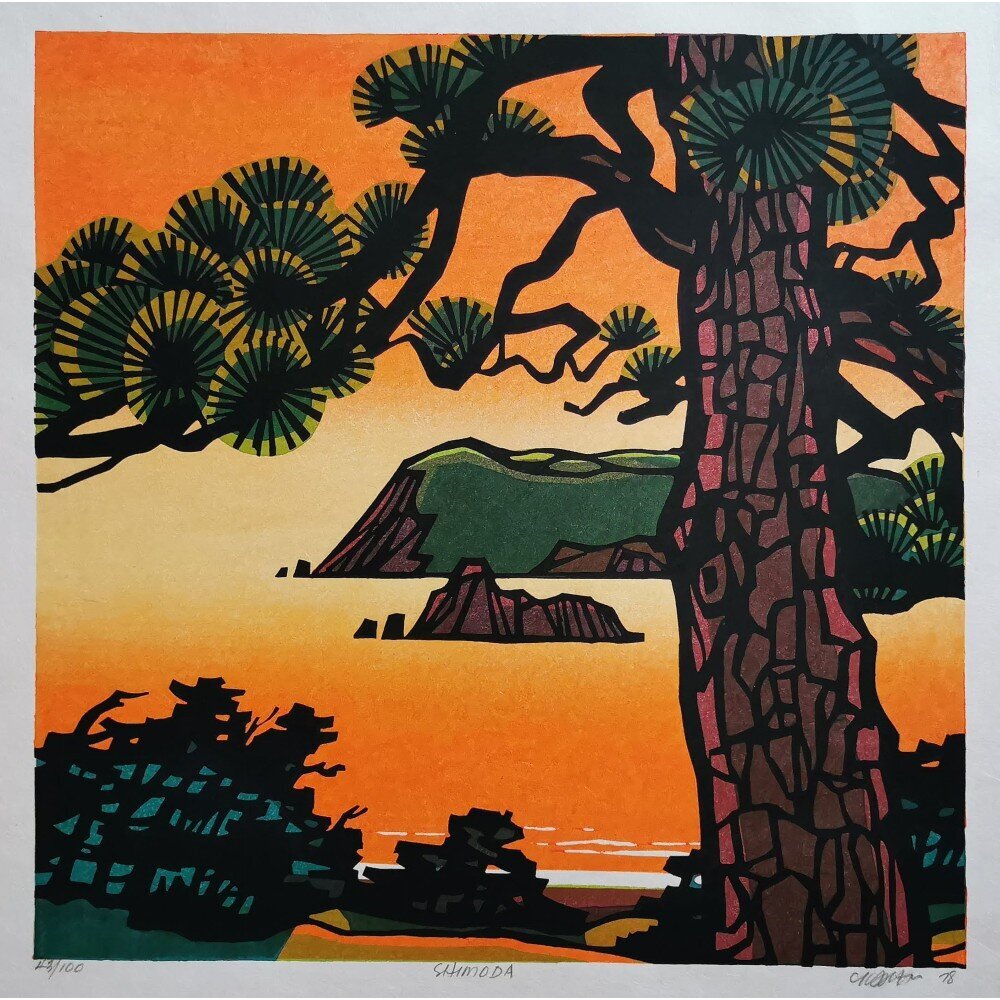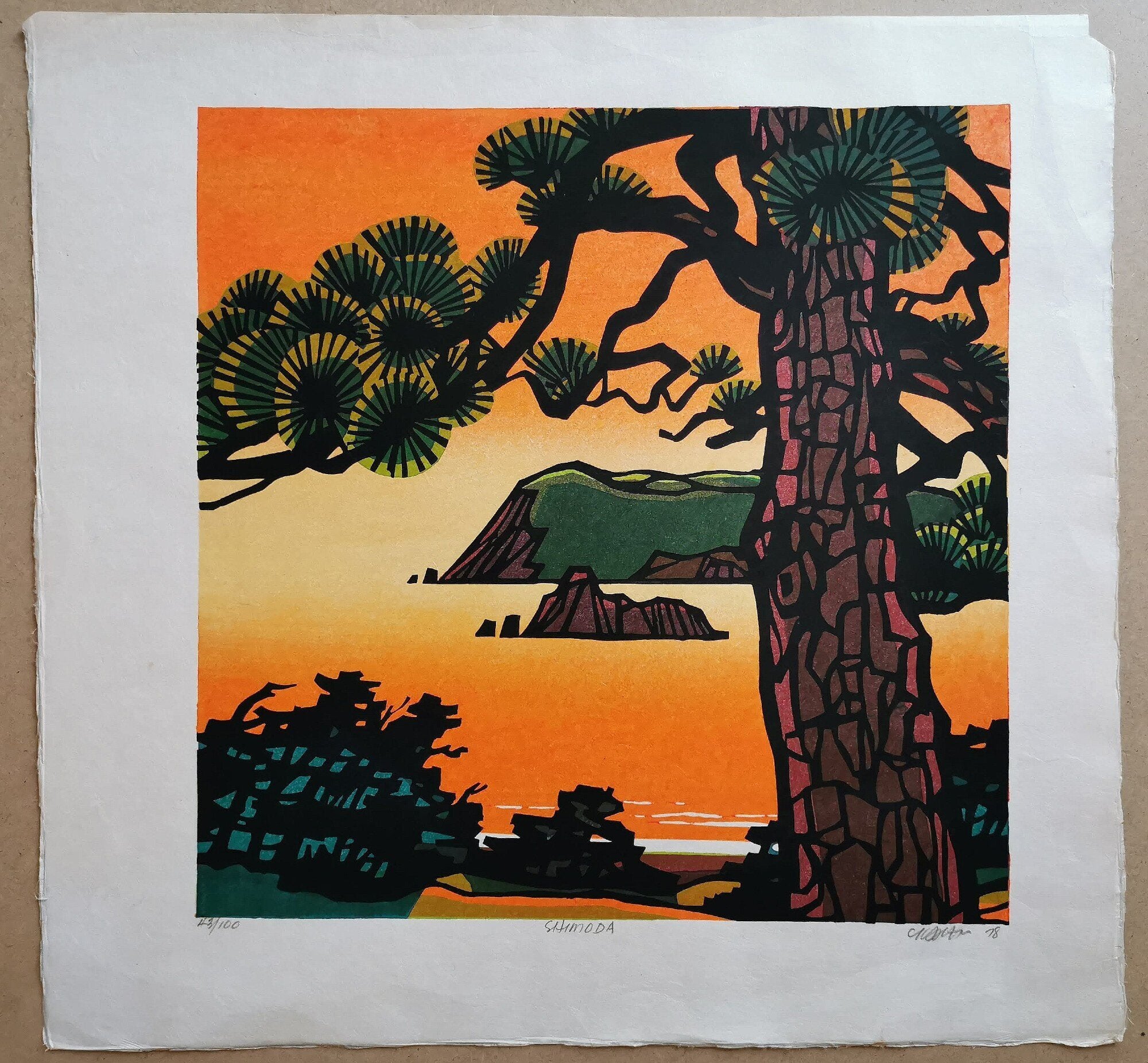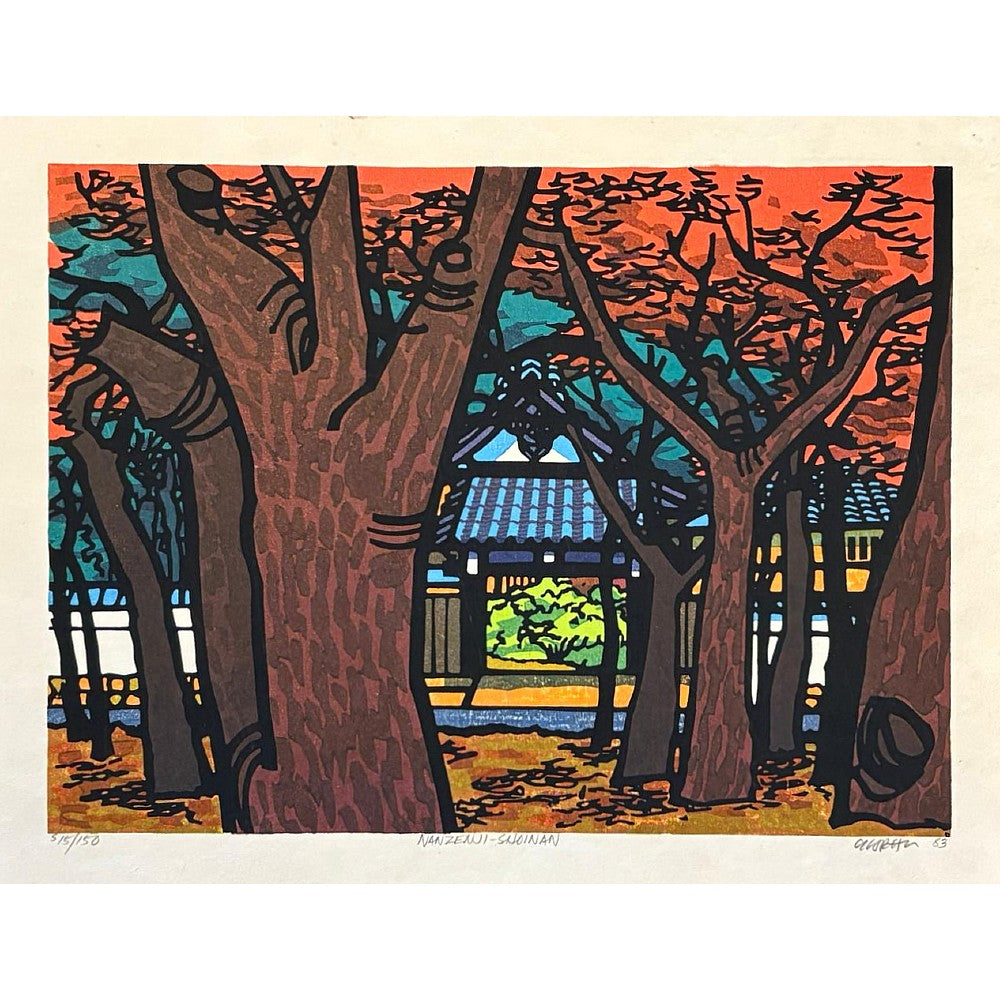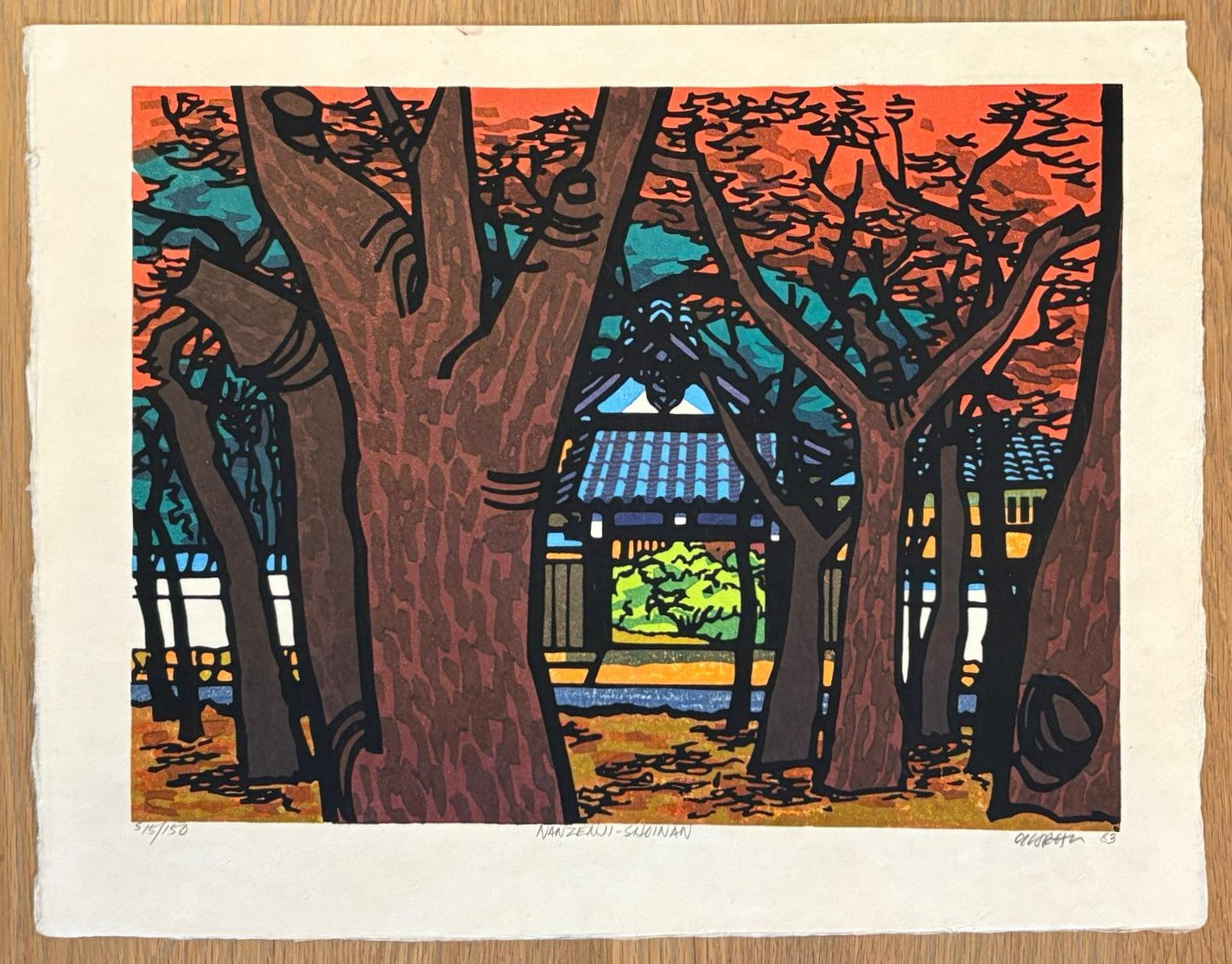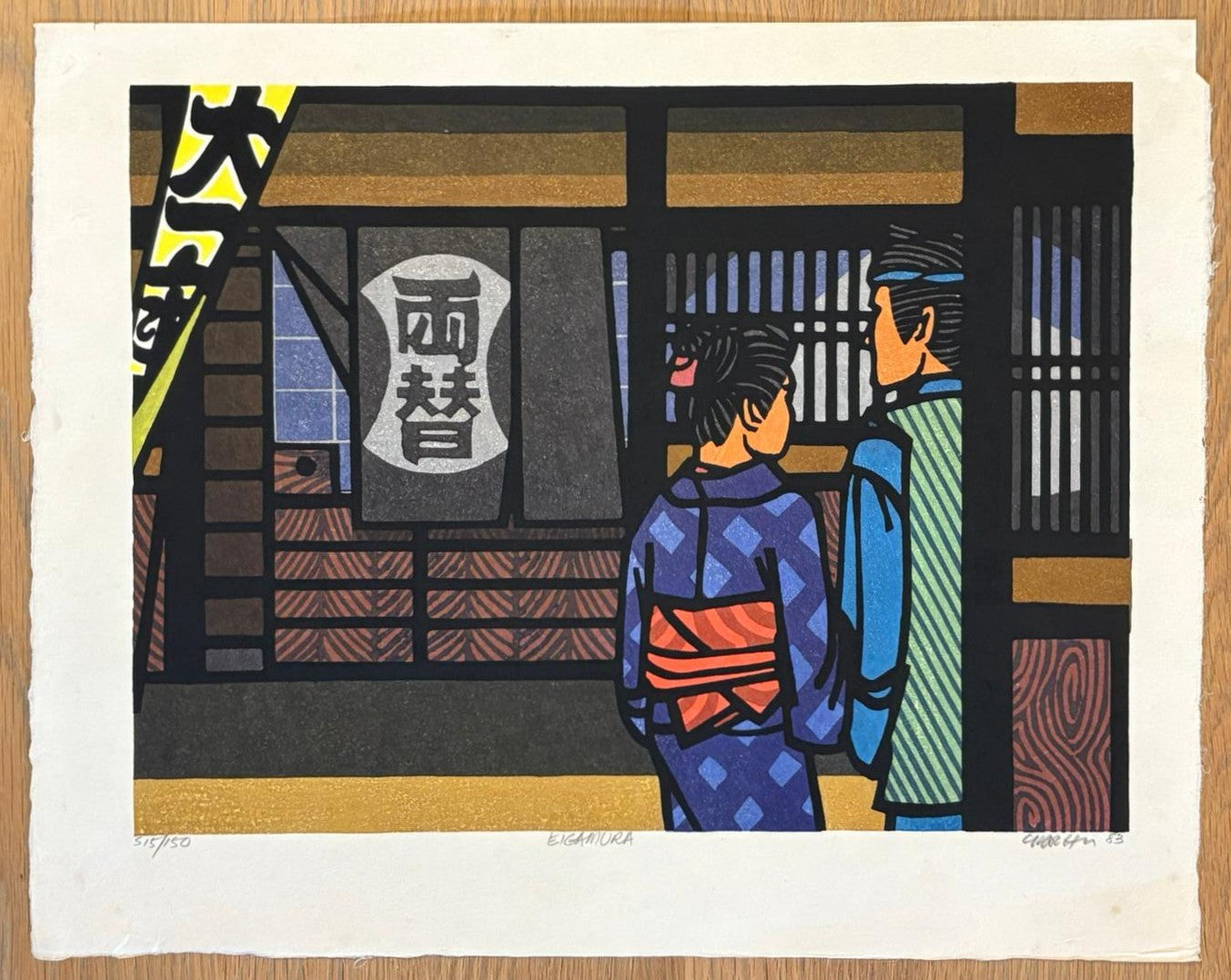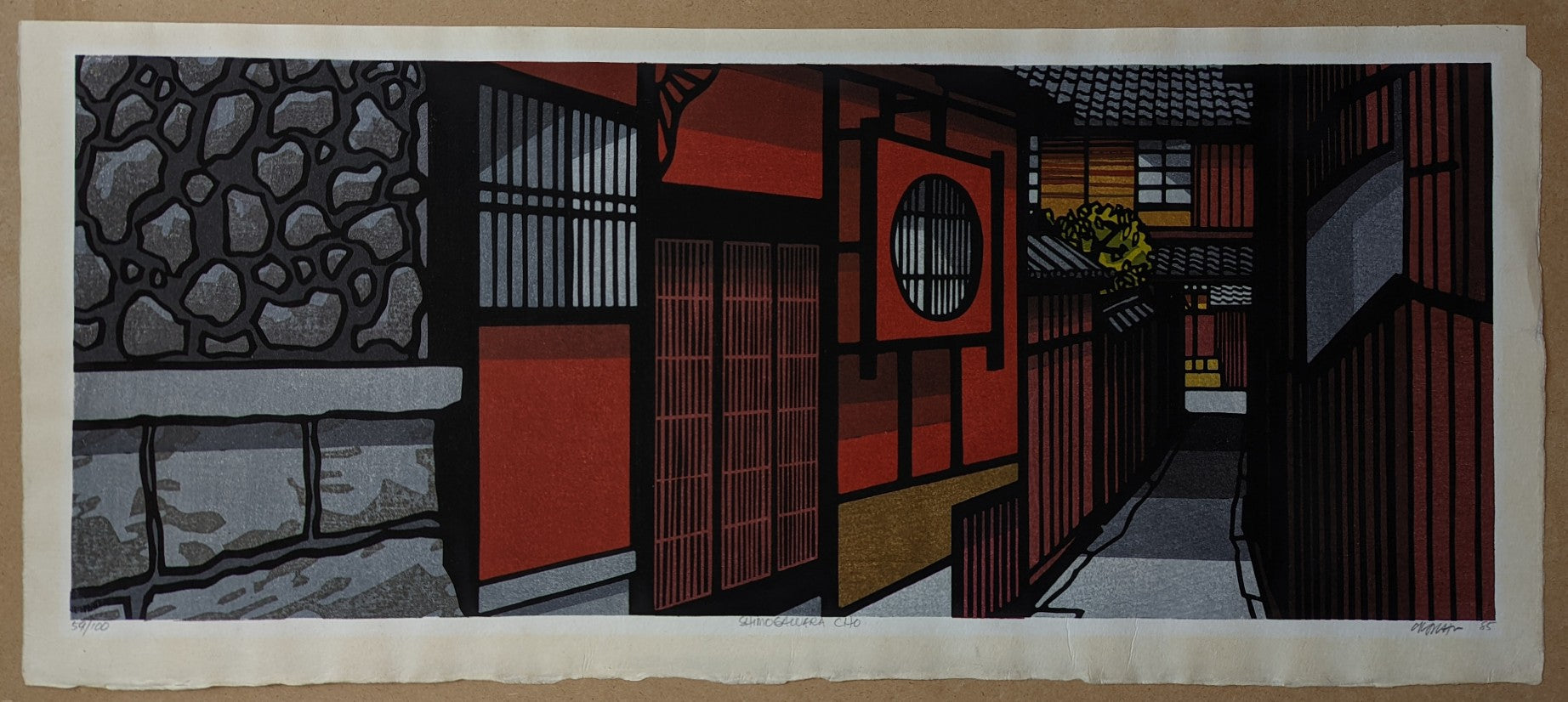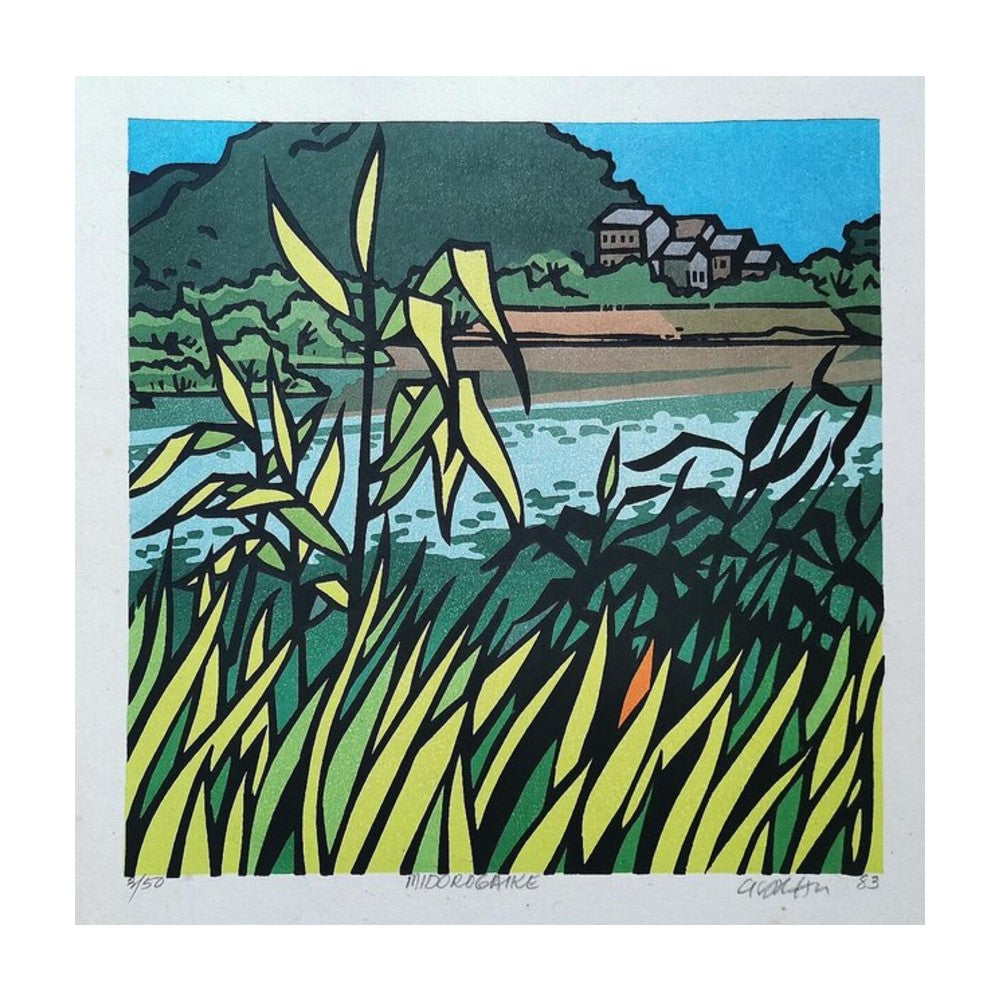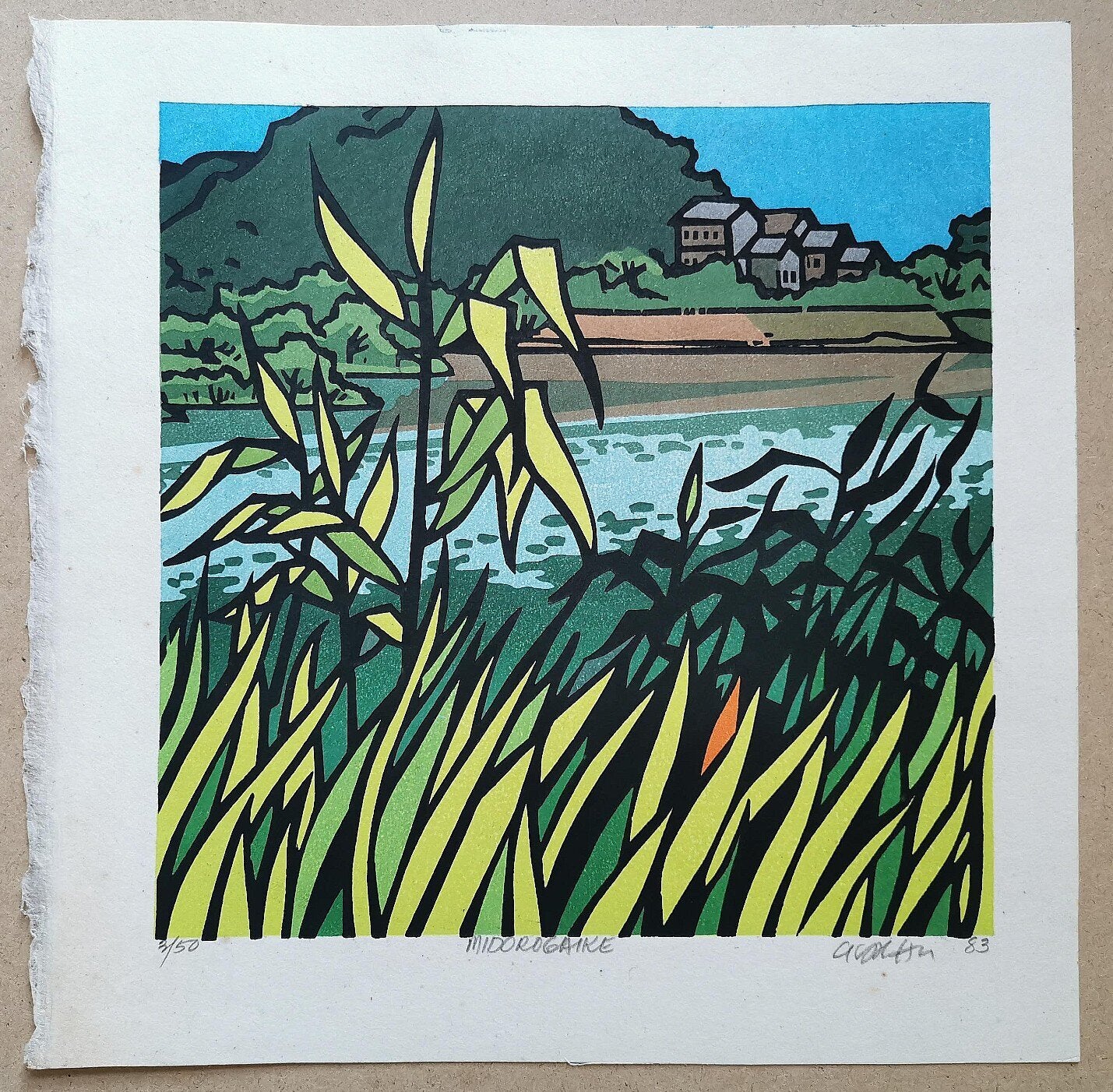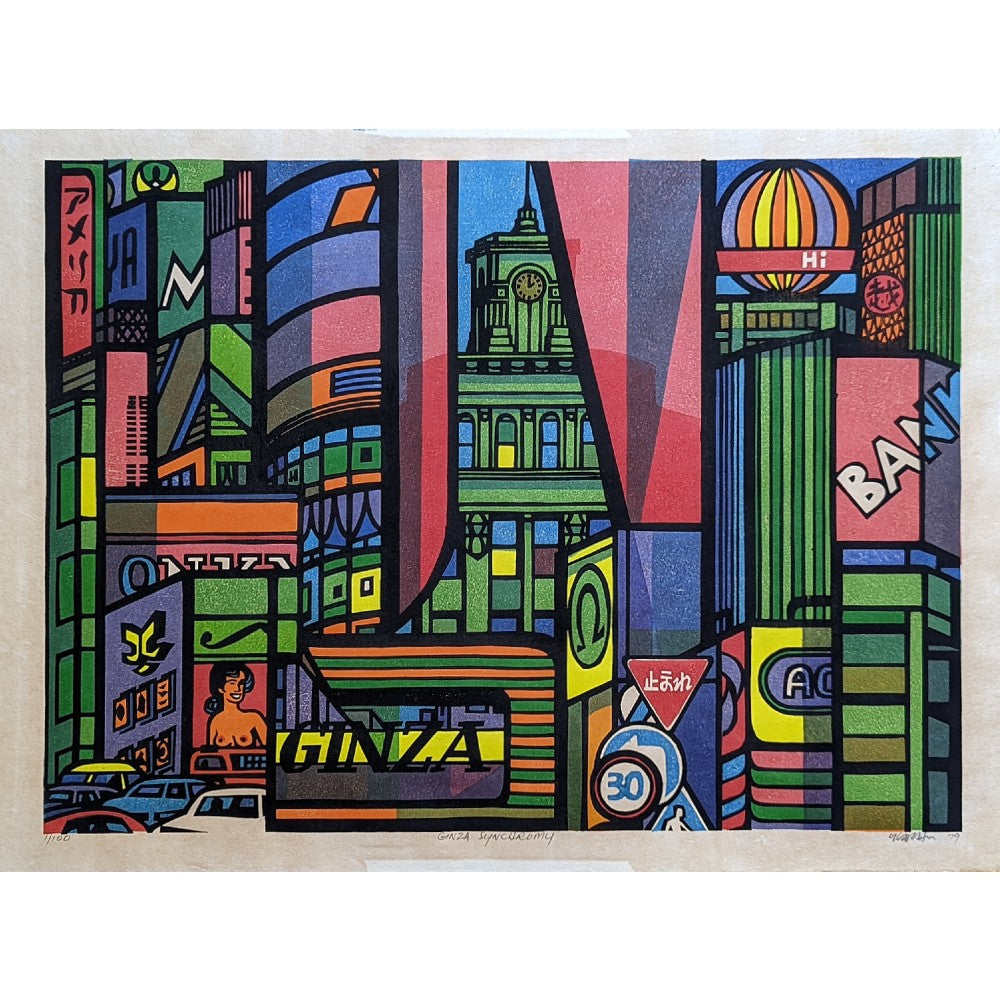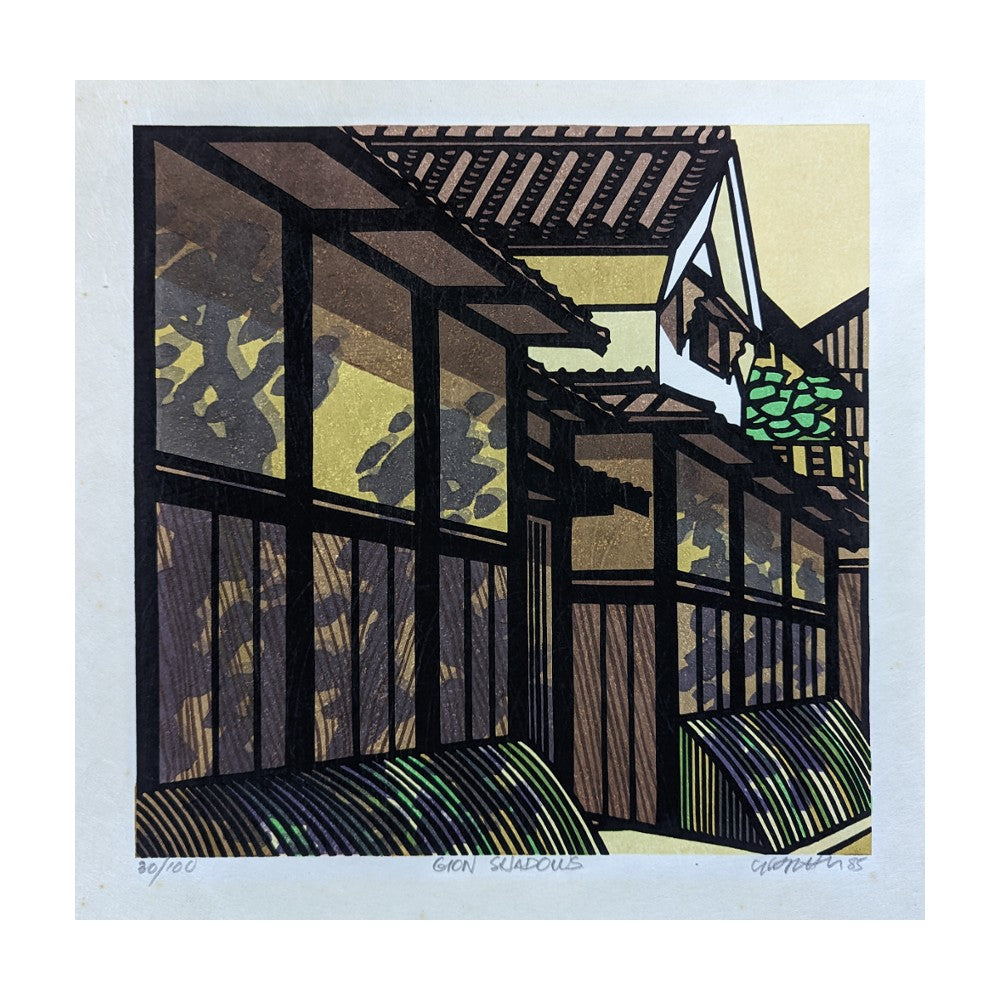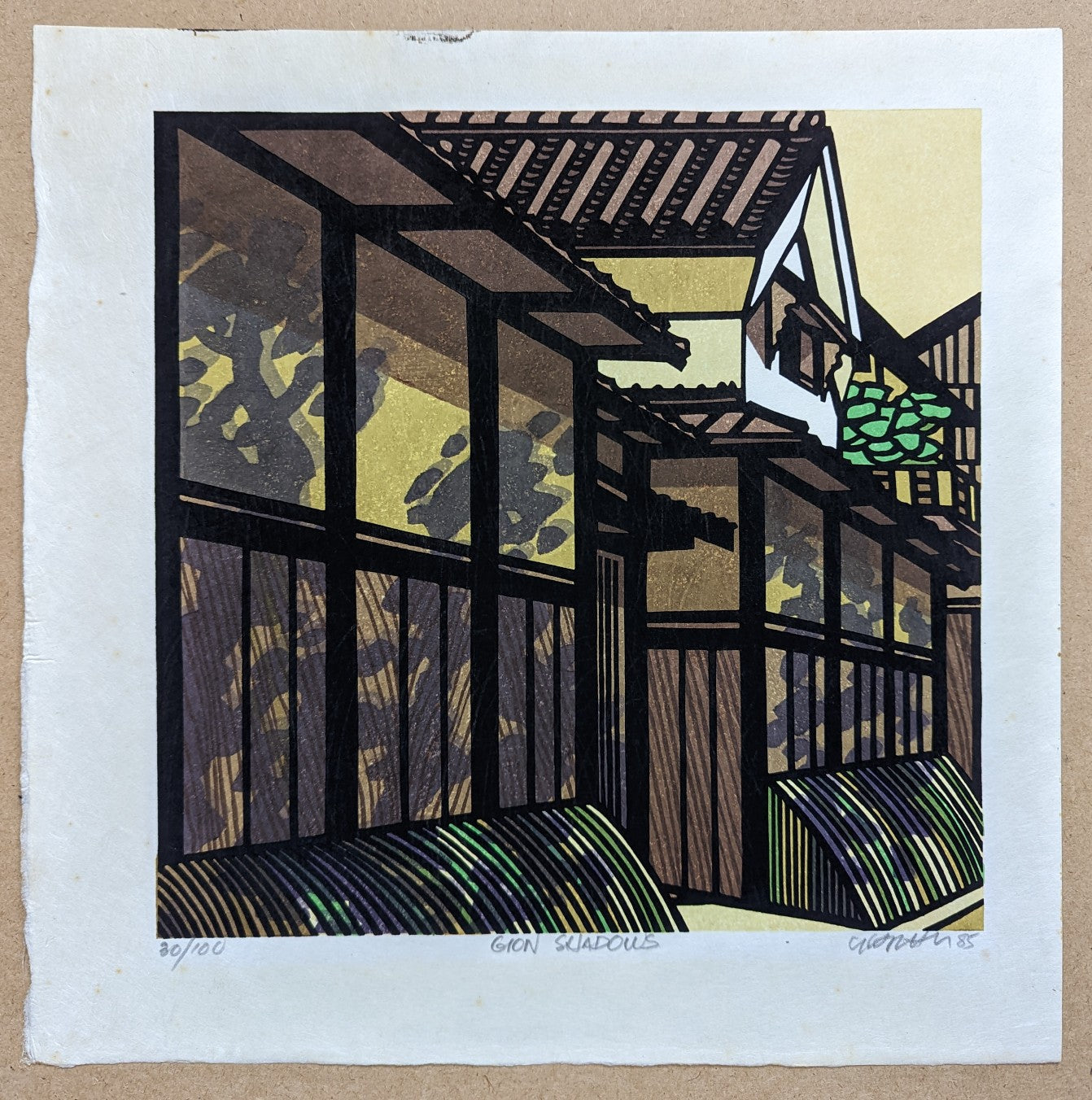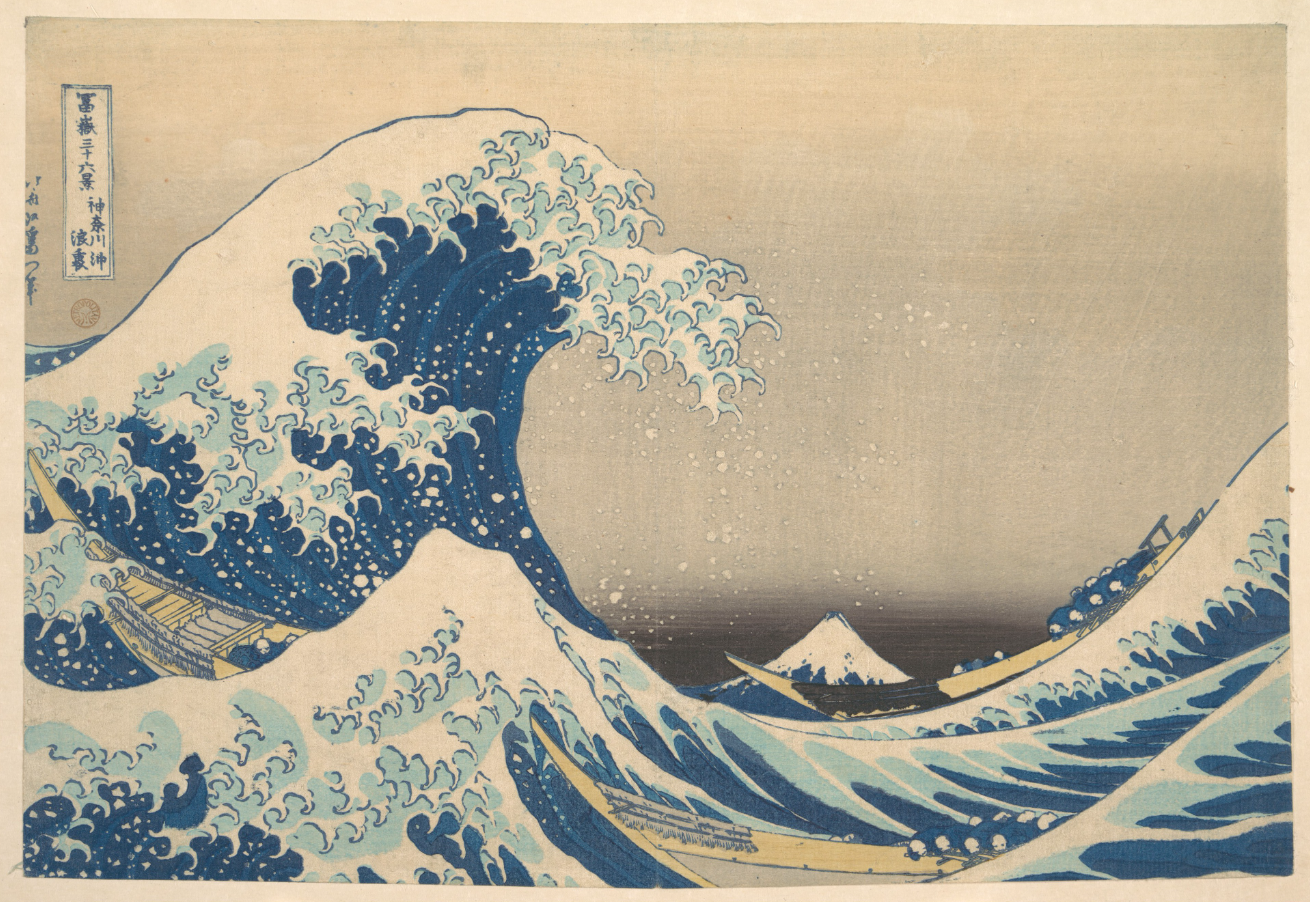クリフトン・カーフ Clifton Karhu (1927-2007)
The Blue-Eyed Japanese: Clifton Karhu’s Bold Kyoto Woodblocks
Clifton Karhu was an American artist of Finnish descent, best known for his vivid woodblock prints capturing the architecture and atmosphere of Kyoto. Born in Duluth, Minnesota in 1927 and raised in Worthington, Karhu first came to Japan as a U.S. Navy serviceman stationed in Sasebo after World War II. Though he began art school in Minneapolis, he left in the early 1950s to pursue religious training and was later ordained as a Lutheran minister. In 1958, he returned to Japan as a missionary but soon left the church and settled in Gifu, where he began painting professionally.
By 1963, Karhu had moved to Kyoto, a city that would define his career. Drawing inspiration from traditional machiya townhouses and Kyoto's historic streetscapes, Karhu developed a striking visual language marked by bold black outlines, strong geometry, and saturated colour. Under the guidance of printmaker Tetsuo Yamada and colour theorist Stanton Macdonald-Wright, Karhu shifted from watercolour to woodblock printmaking, carving most of his own blocks by hand. He became a highly respected figure within both Japanese and international art circles, and was repeatedly elected head of the Kyoto Japan Print Association.
Karhu passed away in Kanazawa in 2007 after a prolific career that spanned five decades. He exhibited widely across Japan, the U.S., and Europe, and his work is held in major museum collections around the world. Norman H. Tolman, his long-time friend, representative and advocate, affectionately dubbed him “The Blue-Eyed Japanese” - a nod to Karhu’s deep immersion in Japanese culture and his mastery of its artistic traditions. Today, Karhu’s legacy continues through his family and The Tolman Collection (Tokyo & New York), which remains the foremost source of his prints. His son, Joel Karhu, now carries the family tradition forward with a bold printmaking practice of his own.

